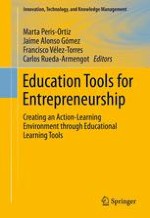This book examines education in entrepreneurship through an action-learning environment that uses educational innovation tools. It explores various education tools, technology tools and pedagogical methods being implemented into university curriculums around the world.
Entrepreneurship in society is rapidly gaining popularity as entrepreneurial activities aimed to create social value are fundamental in the development of an innovative, sustainable economy. This notion has been encouraging universities to incorporate entrepreneurship-related competencies into the curriculums of almost all subjects. Thus, developing an action-learning environment with educational innovation tools, technology tools and pedagogical methods is becoming increasingly important to universities. Students must be fully prepared to face the many challenges in the world and to help develop an innovative and sustainable economy. Universities should therefore promote active learning through innovation so that students can become active participants in their learning.
Featuring contributions and case studies from academics, researchers and practitioners from around the world, the is book provides international perspective into entrepreneurship education and innovation.
